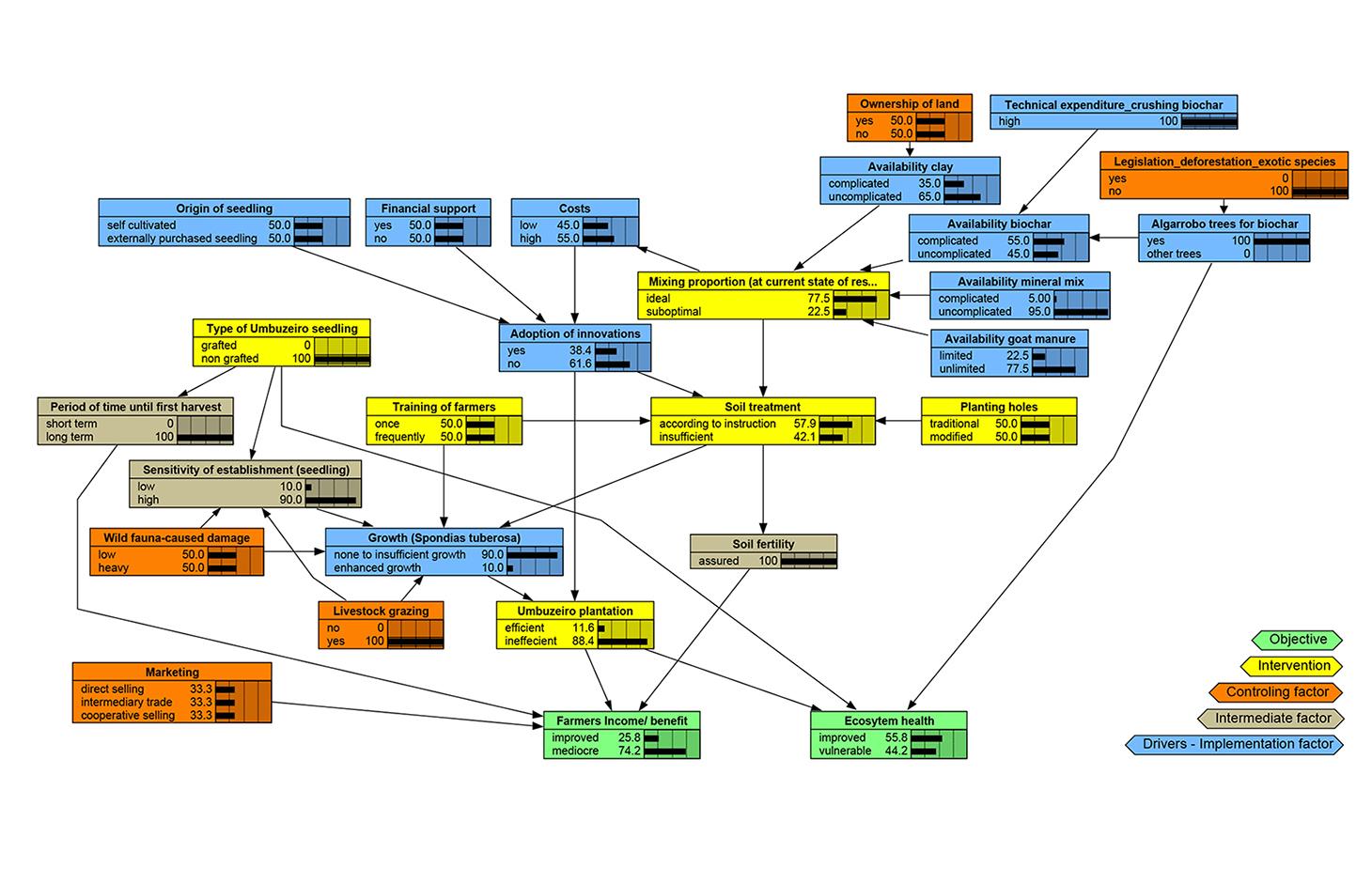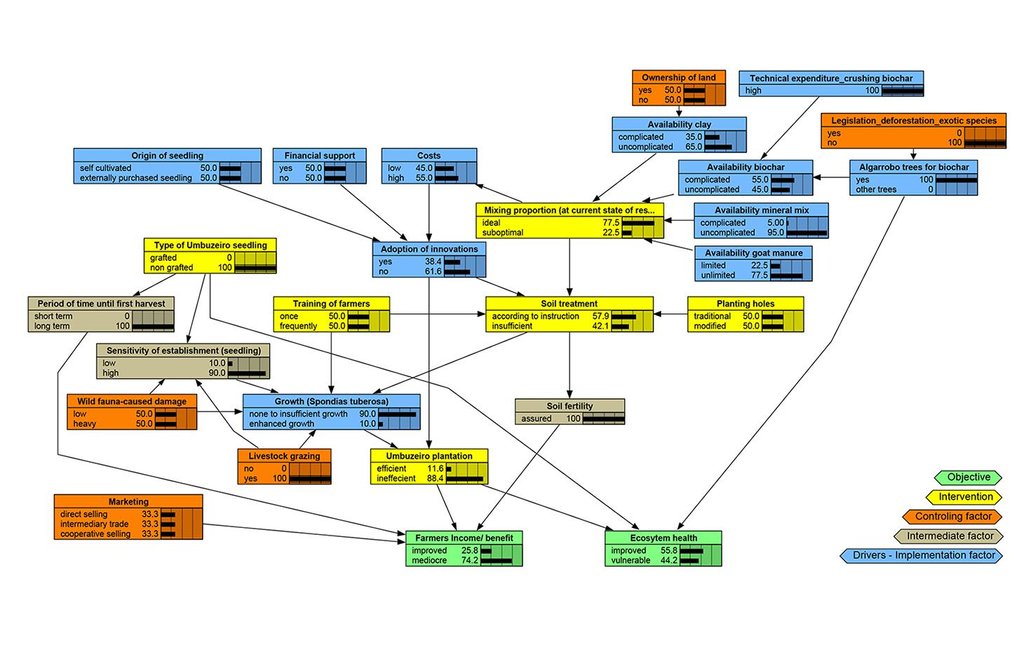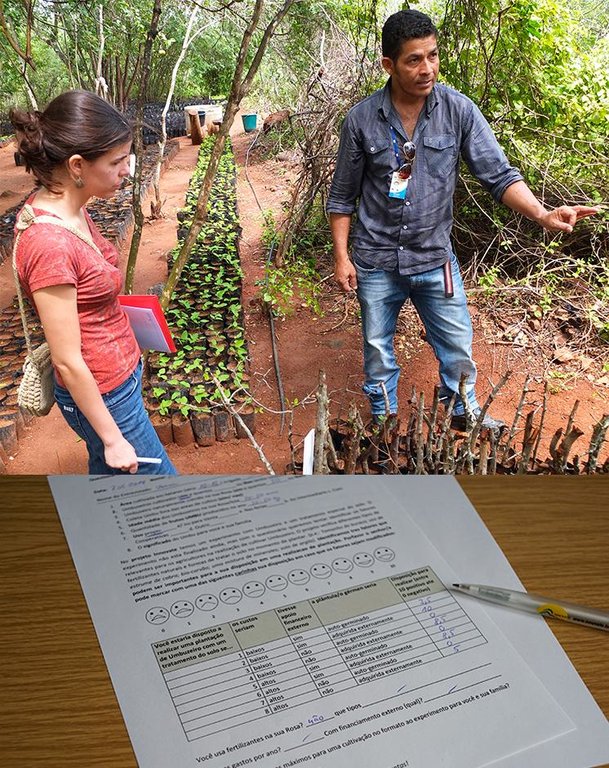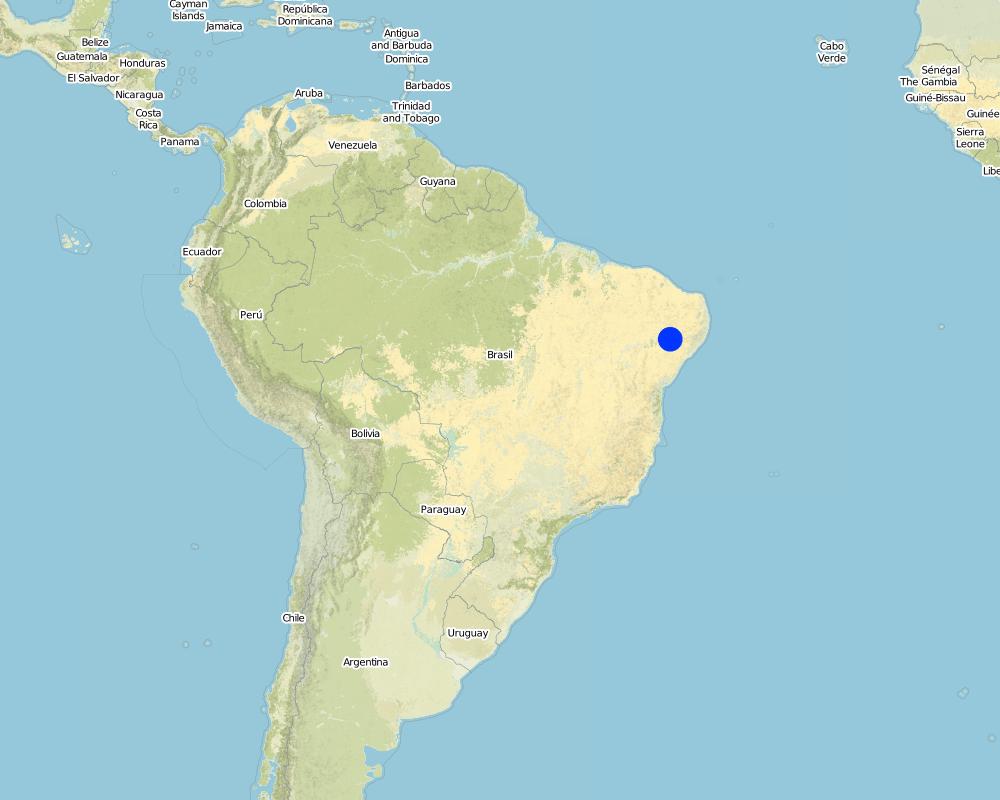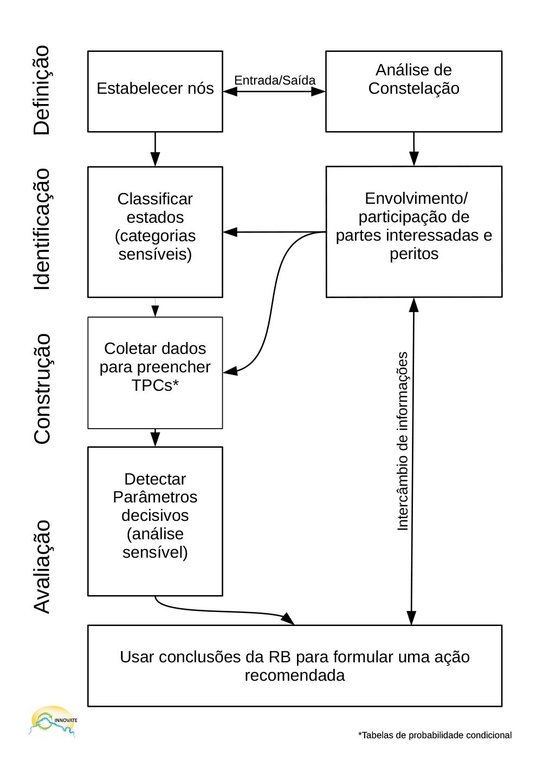Bayesian Network Approach [ប្រទេសប្រេស៊ីល]
- ការបង្កើត៖
- បច្ចុប្បន្នភាព
- អ្នកចងក្រង៖ Verena Rodorff
- អ្នកកែសម្រួល៖ –
- អ្នកត្រួតពិនិត្យ Deborah Niggli
Abordagem com Redes Bayesianas
approaches_1975 - ប្រទេសប្រេស៊ីល
ពិនិត្យមើលគ្រប់ផ្នែក
ពង្រីកមើលទាំងអស់ បង្រួមទាំងអស់1. ព័ត៌មានទូទៅ
1.2 ព័ត៌មានលម្អិតពីបុគ្គលសំខាន់ៗ និងស្ថាប័នដែលចូលរួមក្នុងការវាយតម្លៃ និងចងក្រងឯកសារនៃវិធីសាស្ត្រផ្សព្វផ្សាយ
អ្នកជំនាញឯកទេស SLM:
អ្នកជំនាញឯកទេស SLM:
Steinmetz Liron
steinmetz@tu-berlin.de
Berlin Institute of Technology (Technische Universität Berlin), Environmental Assessment and Planning Research Group
Secr. EB 5, Straße des 17. Juni 145, 10623 Berlin, Germany
ឈ្មោះគម្រោងដែលបានចងក្រងឯកសារ/ វាយតម្លៃលើវិធីសាស្ត្រផ្សព្វផ្សាយ (បើទាក់ទង)
Book project: Making sense of research for sustainable land management (GLUES)1.3 លក្ខខណ្ឌទាក់ទងទៅនឹងការប្រើប្រាស់ទិន្នន័យដែលបានចងក្រងតាមរយៈវ៉ូខេត
តើពេលណាដែលទិន្នន័យបានចងក្រង (នៅទីវាល)?
11/12/2015
អ្នកចងក្រង និង(បុគ្គលសំខាន់ៗ)យល់ព្រមទទួលយកនូវលក្ខខណ្ឌនានាទាក់ទងទៅនឹងការប្រើប្រាស់ទិន្នន័យដែលបានចងក្រងតាមរយៈ វ៉ូខេត:
បាទ/ចា៎
2. ការពណ៌នាអំពីវិធីសាស្ត្រផ្សព្វផ្សាយ SLM
2.1 ពណ៌នាសង្ខេបខ្លីពីវិធីសាស្ត្រផ្សព្វផ្សាយ
Assessment of the probability and effectiveness of management options or innovations to describe cause-effect-relationships and to make recommendations for action on sustainable land management in the Itaparica region in Northeast Brazil.
2.2 ពណ៌នាលម្អិតពិវិធីសាស្ត្រផ្សព្វផ្សាយ
ពណ៌នាលម្អិតពិវិធីសាស្ត្រផ្សព្វផ្សាយ:
The study focus was on the determinants behind the adoption of innovations developed under a scientific project. The specific innovation analysed was intended to benefit both the environment and local smallholder farmers: namely cultivating a multi-purpose, low-growing, to the prevailing harsh semiarid environment well-adapted tree species (Spondias tuberosa L. – so called umbuzeiro). The assessment method was selected as it allows the combination of qualitative and quantitative data, and can be applied even in data-scarce situations. Moreover, it allows downscaling from a broad overview to small-scale management.
Knowledge is collected from different disciplines to support decision-making through the inter- and transdisciplinary approaches of constellation analysis and Bayesian networks. A Bayesian Network (BN) is a probabilistic graphical model that represents a set of variables (elements, nodes) and their conditional dependencies. There are three input components to a Bayesian Network: (a) a set of elements representing factors relevant to a particular environmental system or problem, (b) the links between these elements, and (c) the conditional probability tables (CPTs) behind each node (element) used to calculate the state of the node. Collected data and ratings are arranged in a hierarchical Bayesian Network model in Netica software (Netica 5.12 - freeware up to 15 nodes).
The creation of a Bayesian Network model is as follows: the objectives and necessary interventions for the innovation process aimed at sustainable management are characterized, with scientists arranging a conceptual diagram, including the mapping of elements. States of the nodes are determined through study of the literature and expert consultation (by scientists, stakeholders and experts on related topics). In a final step, a sensitivity analysis is performed on the Bayesian Network to highlight crucial nodes with the highest influence on objectives in order to derive actions to be recommended.
Stakeholder participation is the core process of designing Bayesian Networks. In pre-consultations stakeholders help identifying major influencing factors and relationships. Assessments are compiled in interview sessions enabling the states of the nodes to be quantified later. In this case study, the stakeholders were farmers, farmer-supporting institutions, and expert in soils, vegetation and crops.
2.3 រូបភាពនៃវិធីសាស្ត្រផ្សព្វផ្សាយ
2.5 ប្រទេស/តំបន់/ទីតាំងកន្លែង ដែលវិធីសាស្ត្រផ្សព្វផ្សាយត្រូវបានអនុវត្តន៍
ប្រទេស:
ប្រទេសប្រេស៊ីល
តំបន់/រដ្ឋ/ខេត្ត:
Pernambuco, Brazil
បញ្ជាក់បន្ថែមពីលក្ខណៈនៃទីតាំង:
Itaparica Reservoir, Petrolândia
Map
×2.6 កាលបរិច្ឆេទនៃការចាប់ផ្តើម និងបញ្ចប់នៃវិធីសាស្រ្តផ្សព្វផ្សាយនេះ
សូមបញ្ជាក់ឆ្នាំដែលបានបង្កើតឡើង:
2014
ឆ្នាំបញ្ចប់ (ប្រសិនបើវិធីសាស្ត្រផ្សព្វផ្សាយត្រូវបានឈប់ប្រើប្រាស់):
2016
2.8 គោលបំណង/ទិសដៅសំខាន់នៃវិធីសាស្ត្រផ្សព្វផ្សាយ
The principle of Bayesian Network modelling is the integration of multiple issues and system components, where information from different sources can be integrated, while also handling missing data and uncertainty. The outcome may be recommendations that support local management decision-making. As the method is strong in transdisciplinary knowledge integration, it has the potential to become one of the core methods in environmental management.
2.9 លក្ខខណ្ឌអនុញ្ញាត ឬរារាំងការអនុវត្តន៍បច្ចេកទេសដែលស្ថិតនៅក្រោមវិធីសាស្រ្តផ្សព្វផ្សាយ
សង្គម/វប្បធម៌/ និងតម្លៃនៃសាសនា
- អំណោយផល
ភាពអាចរកបាននៃធនធានហិរញ្ញវត្ថុ និងសេវាកម្ម
- អំណោយផល
Potential for financial support could be through national small-scale farmer programs; suitable government-sponsored credit programs, public and governmental institutions such as bulk purchasers of agricultural commodities (for instance SEBRAE in Brazil).
ក្របខណ្ឌច្បាប់ (សិទ្ធិកាន់កាប់ដីធ្លី កម្មសិទ្ធីប្រើប្រាស់ដីនិងទឹក)
- អំណោយផល
ចំណេះដឹងស្តីពី SLM និងការទទួលបានការគាំទ្រផ្នែកបច្ចេកទេស
- អំណោយផល
Use available free programmes. Use of visual aids such as smileys for evaluation to make questionnaire more comprehensible.
3. ការចូលរួម និងតួនាទីរបស់ភាគីពាក់ព័ន្ធ
3.1 អ្នកពាក់ព័ន្ធដែលបានចូលរួមក្នុងវិធីសាស្ត្រផ្សព្វផ្សាយ និងតួនាទីរបស់ពួកគេ
- អ្នកប្រើប្រាស់ដីក្នុងតំបន់/សហគមន៍
Farmers of a resettlement community on dryland; Representatives of the indigenous tribe of Pankararu
- អ្នកឯកទេសគ្រប់គ្រងដីប្រកបដោយចីរភាព/ទីប្រឹក្សាបច្ចេកទេសកសិកម្ម
Experts in soil and crop sciences; Expert in vegetation and biodiversity science of the Caatinga
- រដ្ឋាភិបាលថ្នាក់ជាតិ (អ្នករៀបចំផែនការ អ្នកសម្រេចចិត្ត)
Institute of Agriculture in Pernambuco (IPA); A private company as the hired institution by the National Institute for Colonization and Agrarian Reform - INCRA
- Company of plant breeding, seed science
3.2 ការចូលរួមរបស់អ្នកប្រើប្រាស់ដីក្នុងតំបន់/ សហគមន៍ក្នុងតំបន់ក្នុងដំណាក់កាលផ្សេងគ្នានៃវិធីសាស្រ្តផ្សព្វផ្សាយ
| ការចូលរួមរបស់អ្នកប្រើប្រាស់ដីក្នុងតំបន់/សហគមន៍ក្នុងតំបន់ | សូមបញ្ជាក់នរណាត្រូវបានចូលរួម ព្រមទាំងពណ៌នាសកម្មភាពទាំងនោះ | |
|---|---|---|
| ការចាប់ផ្តើម/ការលើកទឹកចិត្ត | អសកម្ម | Interviews |
| ការរៀបចំផែនការ | គ្មាន | |
| ការអនុវត្តន៍ | អន្តរកម្ម | Interviews |
| ការត្រួតពិនិត្យ និងវាយតម្លៃ | អន្តរកម្ម | Interviews |
3.3 គំនូសបំព្រួញ (ប្រសិនបើមាន)
ការពណ៌នា:
Simplified work flow of Bayesian Network (BN) showing different steps:
Defining: apply or use already applied constellation analysis (see A_BRA003en) for information and visualization of node setting for the BN model and for stakeholder identification.
Identifying: clarify objectives, implementation factors, interventions, intermediates and controlling factors. Give every node a state, e.g. date, temperature range, amount of precipitation, or a classification: high / low…
Building: Collect data to fill the conditional probability tables (CPTs) behind every node. Prepare questionnaires, ask experts and conduct a literature search. Avoid too much states and no more than four nodes indicating the next node. Finish the model by entering all data in a programme (e.g. Netica).
Evaluating: Compare different scenarios by changing the state of inputs (e.g. from low to high). Show a baseline (without changes), a most improved and least improved scenario to justify recommendations. Finally, hand over recommended actions to stakeholders.
អ្នកនិពន្ធ:
Liron Steinmetz, Verona Rodorff
3.4 ការសម្រេចចិត្តលើការជ្រើសរើសបច្ចេកទេស SLM
តើការសម្រេចចិត្តក្នុងការជ្រើសរើសបច្ចេកទេស(ច្រើន)ត្រូវបានធ្វើឡើងយ៉ាងដូចម្តេច?
- The approach was initiated by scientists.
ចូរពន្យល់:
The approach can be applied to SLM technologies, but also can be employed for other purposes. In our data-scarce case, the method was very helpful as able to deal with different data sources and types.
សូមបញ្ជាក់ តើការសម្រេចធ្វើឡើងដោយផ្អែកលើអ្វីជាមូលដ្ឋាន:
- លទ្ធផលបានពីការស្រាវជ្រាវ
4. ជំនួយបច្ចេកទេស ការកសាងសមត្ថភាព និងការគ្រប់គ្រងចំណេះដឹង
4.1 ការកសាងសមត្ថភាព/ បណ្តុះបណ្តាល
តើវគ្គបណ្តុះបណ្តាលបានផ្តល់ឱ្យអ្នកប្រើប្រាស់ដី/អ្នកពាក់ព័ន្ធផ្សេងៗទៀតដែរឬទេ?
បាទ/ចា៎
សូមបញ្ជាក់តើអ្នកណាត្រូវបានបណ្តុះបណ្តាល:
- អ្នកប្រើប្រាស់ដី
- បុគ្គលិកចុះទីវាល/អ្នកផ្តល់ប្រឹក្សាយោបល់
ទម្រង់នៃការបណ្តុះបណ្តាល:
- ពីកសិករទីកសិករ
- ទីតាំងបង្ហាញ
ទម្រង់នៃការបណ្តុះបណ្តាល:
- workshops
ប្រធានបទបណ្តុះបណ្តាល:
Detecting decisive factors for an ideal scenario of implementation being adopted by land users. For the participants it was interesting to participate in preparing a joint view of their action space - this is generally known in its parts though not with its major interconnections and complexity. Participants especially acknowledged this value added for them.
4.2 សេវាផ្តល់ប្រឹក្សាយោបល់
តើអ្នកប្រើប្រាស់ដីបានទទួលនូវសេវាផ្តល់ប្រឹក្សាដែរ ឬទេ?
ទេ
4.3 ការពង្រឹងសមត្ថភាពស្ថាប័ន (ការអភិរឌ្ឍន៍អង្គភាព)
តើស្ថាប័នទាំងអស់ត្រូវបានបង្កើតឡើង ឬពង្រឹងសមត្ថភាពតាមរយៈវិធីសាស្ត្រផ្សព្វផ្សាយដែរ ឬទេ?
- បាទ/ច៎ា បានខ្លាំង
សូមបញ្ជាក់ថាតើស្ថាប័នត្រូវបានពង្រឹង ឬបង្កើតឡើងនៅត្រឹមកម្រិតណា(ច្រើន)?
- ថ្នាក់មូលដ្ឋាន
ចូពណ៌នាពីស្ថាប័ន តួនាទី និងទំនួលខុសត្រូវ សមាជិក ។ល។:
Decisive factors for the adoption of innovations were identified, including favoring cultivation techniques for Umbuzeiro agriculture (e.g. soil additives).
សូមបញ្ជាក់ប្រភេទនៃការគាំទ្រ:
- ការកសាងសមត្ថភាព/ បណ្តុះបណ្តាល
4.4 ការត្រួតពិនិត្យ និងវាយតម្លៃ
តើការត្រួតពិនិត្យ និងវាយតម្លៃគឺជាផ្នែកមួយនៃវិធីសាស្ត្រដែរឬទេ?
បាទ/ចា៎
ប្រសិន បាទ/ច៎ា តើឯកសារនេះបានបង្កើតឡើងក្នុងគោលបំណងប្រើប្រាស់សម្រាប់ការត្រួតពិនិត្យ និងវាយតម្លៃដែរឬទេ?
ទេ
4.5 ការស្រាវជ្រាវ
តើការស្រាវជ្រាវ គឺជាផ្នែកមួយនៃវិធីសាស្រ្តដែរឬទេ?
បាទ/ចា៎
បញ្ជាក់ប្រធានបទ:
- សង្គមវិទ្យា
- សេដ្ឋកិច្ច/ទីផ្សារ
- បរិស្ថានវិទ្យា
- បច្ចេកវិទ្យា
សូមផ្តល់ព័ត៌មានបន្ថែមទៀតឱ្យបានលម្អិត និងចង្អុលបង្ហាញនរណាដែលបានធ្វើការស្រាវជ្រាវ:
Research on the situation of local action and governance was a major driver for the workshops. University project members prepared and held the workshops, while also did extended interpretation and integration of results across a number of different workshops.
5. ថវិកា និងសម្ភារៈឧបត្ថម្ភពីខាងក្រៅ
5.1 ថវិកាប្រចាំឆ្នាំសម្រាប់ផ្សព្វផ្សាយ SLM
ប្រសិនបើចំនួនពិតប្រាកដនៃថវិកាប្រចាំឆ្នាំមិនត្រូវបានដឹងច្បាស់ សូមប្រាប់ពីចន្លោះនៃថវិកានោះ:
- < 2,000
មតិយោបល់ (ឧ. ប្រភពសំខាន់នៃមូលនិធិ/ម្ចាស់ជំនួយចំបង):
German Federal Ministry of Education and Research (BMBF) 100%
5.2 ការគាំទ្រផ្នែកហិរញ្ញវត្ថុ / សម្ភារៈដែលបានផ្តល់ទៅឱ្យអ្នកប្រើប្រាស់ដី
តើអ្នកប្រើប្រាស់ដីបានទទួលការគាំទ្រផ្នែកហិរញ្ញវត្ថ/សម្ភារៈសម្រាប់ការអនុវត្តន៍បច្ចេកទេសដែរឬទេ:
ទេ
5.3 សូមបញ្ជាក់ពីធាតុចូលត្រូវបានផ្តល់បដិភាគ (រួមទាំងកម្លាំងពលកម្ម)
- គ្មាន
ប្រសិនបើកម្លាំងពលកម្មធ្វើដោយអ្នកប្រើប្រាស់ដី តើវាជាធាតុចូលដ៏សំខាន់មួយដែរ ឬទេ:
- ដោយស្ម័គ្រចិត្ត
5.4 ឥណទាន
តើឥណទានដែលបានផ្តល់នៅក្រោមវិធីសាស្ត្រផ្សព្វផ្សាយសម្រាប់សកម្មភាព SLM នេះយ៉ាងដូចម្តេច?
ទេ
5.5 ការលើកទឹកចិត្ត ឬវិធីសាស្ត្រដ៏ទៃទៀត
តើមានការលើកទឹកចិត្តផ្សេងទៀត ឬឧបករណ៍ប្រើប្រាស់ដើម្បីលើកកម្ពស់ការអនុវត្តន៍បច្ចេកទេស SLM?
ទេ
6. ការវិភាគរកផលប៉ះពាល់ និងសេចក្តីសន្និដ្ឋាន
6.1 ផលប៉ះពាល់នៃវិធីសាស្ត្រផ្សព្វផ្សាយ
តើវិធីសាស្ត្រផ្សព្វផ្សាយជួយអ្នកប្រើប្រាស់ដីដើម្បីអនុវត្តន៍ និងថែទាំបច្ចេកទេស SLM?
- ទេ
- បាទ/ច៎ា បន្តិចបន្តួច
- បាទ/ច៎ា ជាមធ្យម
- បាទ/ច៎ា បានខ្លាំង
The different scenarios of the BN tested highlight the good probability of adoption, which then can support sustainable land management.
តើវិធីសាស្ត្រផ្សព្វផ្សាយនេះផ្តល់សិទ្ធិអំណាចដល់សង្គមនិងសេដ្ឋកិច្ចដែលក្រុមមិនទទួលបានផលប្រយោជន៍?
- ទេ
- បាទ/ច៎ា បន្តិចបន្តួច
- បាទ/ច៎ា ជាមធ្យម
- បាទ/ច៎ា បានខ្លាំង
The approach was conducted especially for smallscale farmers without sophisticated irrigation tecniques and as well for the indigenous tribe Pankararu.
តើវិធីសាស្ត្រផ្សព្វផ្សាយបានឱ្យប្រសើរឡើងនូវបញ្ហាកាន់កាប់ដីធ្លី/សិទ្ធិអ្នកប្រើប្រាស់ដែលរារាំងដល់ការអនុវត្ត SLM?
- ទេ
- បាទ/ច៎ា បន្តិចបន្តួច
- បាទ/ច៎ា ជាមធ្យម
- បាទ/ច៎ា បានខ្លាំង
The BN model offers alternative sources for soil additives in case land use rights are hindering availability.
តើវិធីសាស្ត្រផ្សព្វផ្សាយនាំឱ្យប្រសើរឡើងនូវសន្តិសុខស្បៀង/ធ្វើឱ្យប្រសើរឡើងនូវអាហាររូបត្ថម្ភ?
- ទេ
- បាទ/ច៎ា បន្តិចបន្តួច
- បាទ/ច៎ា ជាមធ្យម
- បាទ/ច៎ា បានខ្លាំង
Not inmediately but a long-term influence is possible.
Did the Approach lead to improved livelihoods / human well-being?
- ទេ
- បាទ/ច៎ា បន្តិចបន្តួច
- បាទ/ច៎ា ជាមធ្យម
- បាទ/ច៎ា បានខ្លាំង
The different scenarios of the BN tested highlight the good probability of adoption, which can then benefit the livelihoods of adopters.
6.2 ការលើកទឹកចិត្តចម្បងៗរបស់អ្នកប្រើប្រាស់ដីសម្រាប់ការអនុវត្តបច្ចេកទេស SLM
- បង្កើនផលិតកម្ម
- បង្កើនប្រាក់ចំណេញ (សមត្ថភាព) បង្កើនអត្រាចំណេញ
- ការចំណាយ/បដិភាគ
- ពង្រឹងស្មារតីផ្នែកបរិស្ថាន
- well-being and livelihoods improvement
6.3 សកម្មភាពផ្សព្វផ្សាយដែលប្រកបដោយចីរភាព
តើអ្នកប្រើប្រាស់ដីអាចធ្វើឱ្យមានចីរភាពនូវអ្វីដែលត្រូវបានអនុវត្តន៍តាមរយៈវិធីសាស្ត្រផ្សព្វផ្សាយដែរឬទេ(ដោយពុំមានការគាំទ្រពីអ្នកខាងក្រៅ)?
- បាទ/ចា៎
ប្រសិនបាទ/ច៎ា សូមរៀបរាប់ថាធ្វើយ៉ាងម៉េច:
Lessons learnt (especially on most favorable soil additive mixture) improve effectiveness of potential Umbuzeiro cultivation. Stakeholder pool of BN-creation comprises business networking opportunities for land users.
6.4 ភាពខ្លាំង/ គុណសម្បត្តិនៃវិធីសាស្ត្រផ្សព្វផ្សាយ
| ភាពខ្លាំង/ គុណសម្បត្តិ/ ឱកាស ទស្សនៈរបស់បុគ្គលសំខាន់ៗ |
|---|
| The combination of input variables from any given background is possible. |
| Via Bayesian networks changes to the modelled system can be tested prospectively. The space and potential effects of management options can be shown to decision makers. |
| Combining Bayesian networks with Constellation Analysis allows easy determination of major nodes of the model and supports the process of decision-making for sustainable land management activities; methods proved to be very transdisciplinary. |
6.5 ភាពខ្សោយ/ គុណវិបត្តិនៃវិធីសាស្ត្រ និងរកដំណោះស្រាយ
| ភាពខ្សោយ/ គុណវិបត្តិ/ ហានិភ័យក្នុងទស្សនៈរបស់បុគ្គលសំខាន់ៗ | តើបច្ចេកទេសទាំងនោះបានដោះស្រាយបញ្ហាដូចម្តេច? |
|---|---|
| The statistical component of the Bayesian network approach can be hard to grasp for less educated or near-illiterate stakeholder groups. | Percentages of probability estimations can be translated to a graphical equivalent (e.g. gradual scale of emoticons). |
7. ឯកសារយោង និងវេបសាយ
7.1 វិធីសាស្ត្រ/ ប្រភពនៃព័ត៌មាន
- តាមការចុះទីវាល ការស្រាវជ្រាវនៅទីវាល
- ការសម្ភាសន៍ជាមួយអ្នកប្រើប្រាស់ដី
7.2 ឯកសារយោងដែលបានចេញផ្សាយ
ចំណងជើង អ្នកនិពន្ធ ឆ្នាំ ISBN:
Rodorff V., Steinmetz L., Siegmund-Schultze M., Köppel J. (2015) Using Bayesian networks to depict favouring frame conditions for sustainable land management: Umbuzeiro-tree planting by smallholders in Brazil
មានប្រភពមកពីណា? ថ្លៃដើមប៉ុន្មាន?
Session: Methods, tools and impact applications. Tropentag ‘Management of land use systems for enhanced food security - conflicts, controversies and resolutions’, September 16 – 18, 2015, Humboldt-Universität zu Berlin, Berlin, Germany
7.3 ចូលទៅទាញយកឯកសារពាក់ព័ន្ធដែលមានលើបណ្តាញអ៊ិនធឺណែត
ចំណងជើង/ ពណ៌នា:
Innovate project information
វេបសាយ:
http://www.innovate.tu-berlin.de/v_menue/subprojects/sp7_decision_support_approach_and_project_coordination/sp7_rm1_decision_support_approach/parameter/en/
ការតភ្ជាប់ និងម៉ូឌុល
ពង្រីកមើលទាំងអស់ បង្រួមទាំងអស់ការតភ្ជាប់
គ្មានការតភ្ជាប់
ម៉ូឌុល
គ្មានម៉ូឌុល


